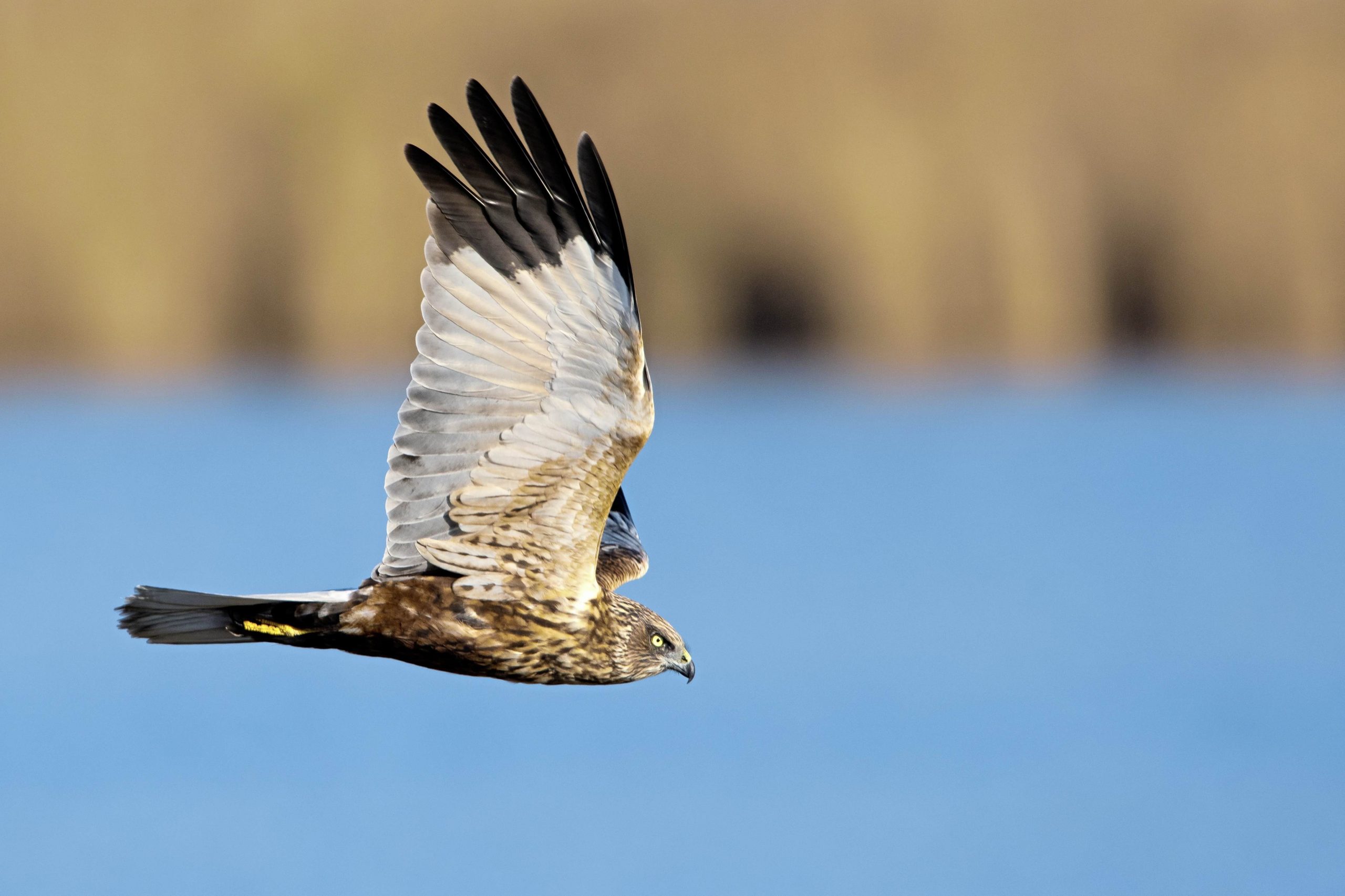ISLANDERS should take care when laying rat poison after a marsh harrier was found dead in St Ouen’s Bay, an environmentalist has said.
Bob Tompkins said the bird of prey was recently found lying face down by National Trust rangers. A post-mortem examination by the JSPCA revealed that the likely cause of death was rodenticide poisoning.
‘One is too many,’ Mr Tompkins said, describing the bird’s death as ‘completely avoidable’.
‘They are an iconic bird, like the red kite or the golden eagle.’
Several peregrine falcons were poisoned in Guernsey over the space of a year recently, an act which Mr Tompkins said ‘was deliberate’.
‘I am not saying that is the case here,’ said Mr Tompkins, but he added that it was a ‘possibility’.
‘If you need to put rodenticide poison out, make sure it is done in a professional manner,’ Mr Tompkins stressed.
Leaving poison out in the open carried a risk of rats dying in the open, he said, adding that these would then be feasted on by carrion eaters such as marsh harriers, barn owls and buzzards, another bird which the environmentalist said had recently been killed by poison.
The deceased marsh harrier was found in otherwise peak condition without a mark on it, he said, but had blood in and around its mouth, beak and digestive system, prompting concerns that it had swallowed a large amount of poison.
Mr Thompson added that birds that did not die straight away suffered the long-term effects, causing a decline in their condition and making them easy prey, as the poison built up in their system.
Poisonings had a ‘domino effect’ on the wider ecosystem, said Mr Tompkins, with birds less able to raise their young successfully, an egg’s chances of survival being reduced and the poison passed on to chicks. He cited one case in which he had come across a nest of barn-owl chicks, which were ‘obviously blind’.
Writing in today’s Nature pages, Mr Tompkins said it was ‘always concerning when a high-profile bird is found dead’.
It was ‘something, unfortunately, that is all too commonly seen in raptors and carrion eaters’, he added.






